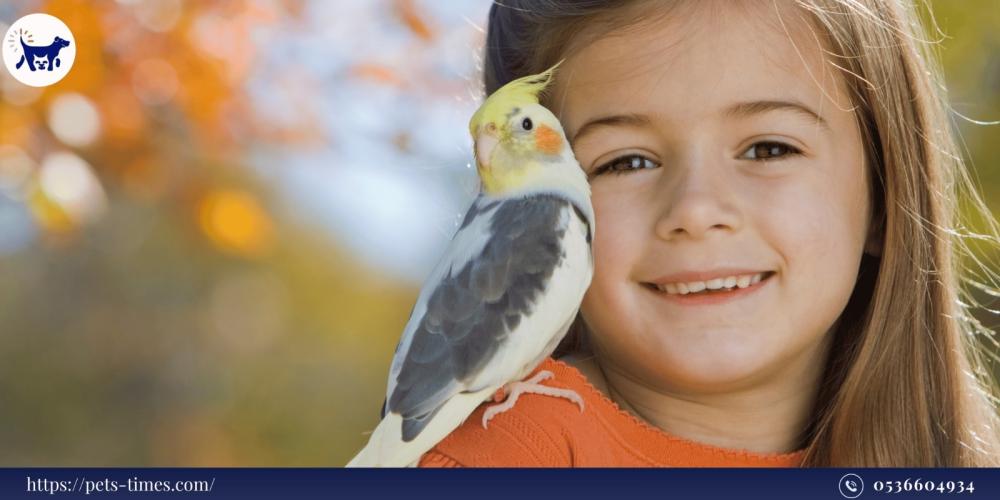The cockatiel is one of the most popular social pet birds kept in homes, thanks to its beauty and friendly behavior.
Origin and General Characteristics:
Native habitat: Australia, particularly in wetlands and bushland.
Length: ~30 cm, Weight: 78–125 grams.
It is characterized by a crest of feathers on its head that displays its emotions (raised when frightened, lowered when calm).
Orange patches on its cheeks (different between males and females in some species).
Cockatiel Types and Colors:
Their colors vary due to genetic mutations in pigments. The most common types are:
1. Common Grey: The original type, grey body with white wing patches, and a yellow face in males.
2. Lutino: White or yellow with red eyes and orange cheeks.
3. Pied (Mottled): Random white patches on the body.
4. Whiteface: Without colored cheek patches, with a white head in males.
5. Rare Blue: White body with a blue tail and black markings.
Raising Cockatiels at Home:
Basic Requirements:
Cage:
Ideal size: 50 cm high x 45 cm wide x 35 cm deep (for a pair).
Preferably metal (to avoid wood damage) with good ventilation.
You can get all your pet supplies from Pets Time Store:
Pets Time Double Stand Parrot Cage with Wheels
Feeding
You can get all your pet supplies from Pets Time Store:
Rio Daily Feed Parakeet Food Mixed Grain
Versel Laga Fruit Mix Food for Birds and Parrots 600g
Lulu Pets Orange Cockatiel Treats 90g
Hygiene: Change the water daily and clean the cage weekly.
You can get all your pet supplies from Pets Time Store:
Simple Solution Pet Cage Cleaner 500ml
Interaction and Care:
Play: Needs wooden toys to stimulate it and maintain a healthy beak.
Bathing: Spray water with a spray bottle or provide a shallow bathing dish.
Training: With patience, it can be taught to imitate simple sounds and words.
Common Problems and Prevention Tips:
Feather Shedding: Normal during the seasons, but stress or poor nutrition can cause it.
Bacterial infections, kidney failure (prevented with regular checkups).
Calcium deficiency in females during egg-laying (add calcium supplements).
Aggressive /p>
Fun Facts:
- Lifespan: 15–20 years, with optimal care, can live up to 25–30 years.
- Intelligence: Able to learn simple tones and words.
- Adaption: Prefers quiet places and is susceptible to neglect (needs a companion or daily interaction).
- Cockatiels love to admire mirrors and playfully, and may groom their feathers in front of them for hours!
- When you bring your face closer, your cockatiel may gently touch your nose with its beak as a sign of affection, but this behavior can also be an exploration of its environment!
- Like many birds, cockatiels raise one of their legs and hide it under their feathers while sleeping to conserve heat.
- A cockatiel may make warning sounds at nightfall if it senses danger, such as sudden movement in the room!
- Raising cockatiels is a rewarding experience for those who understand their needs.

